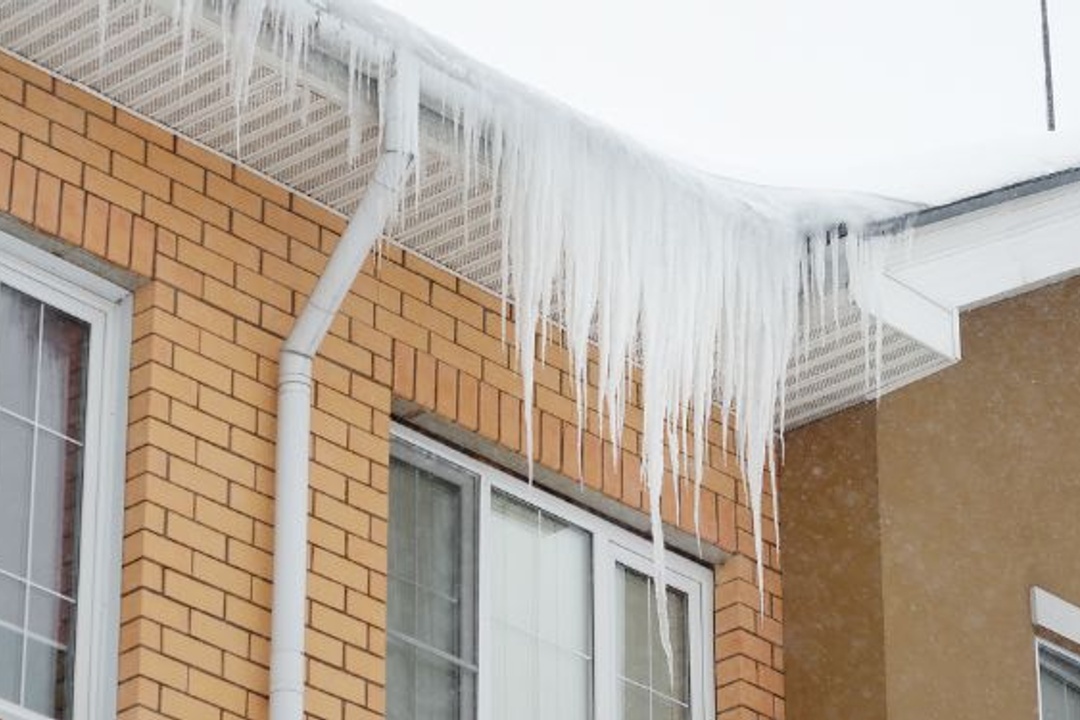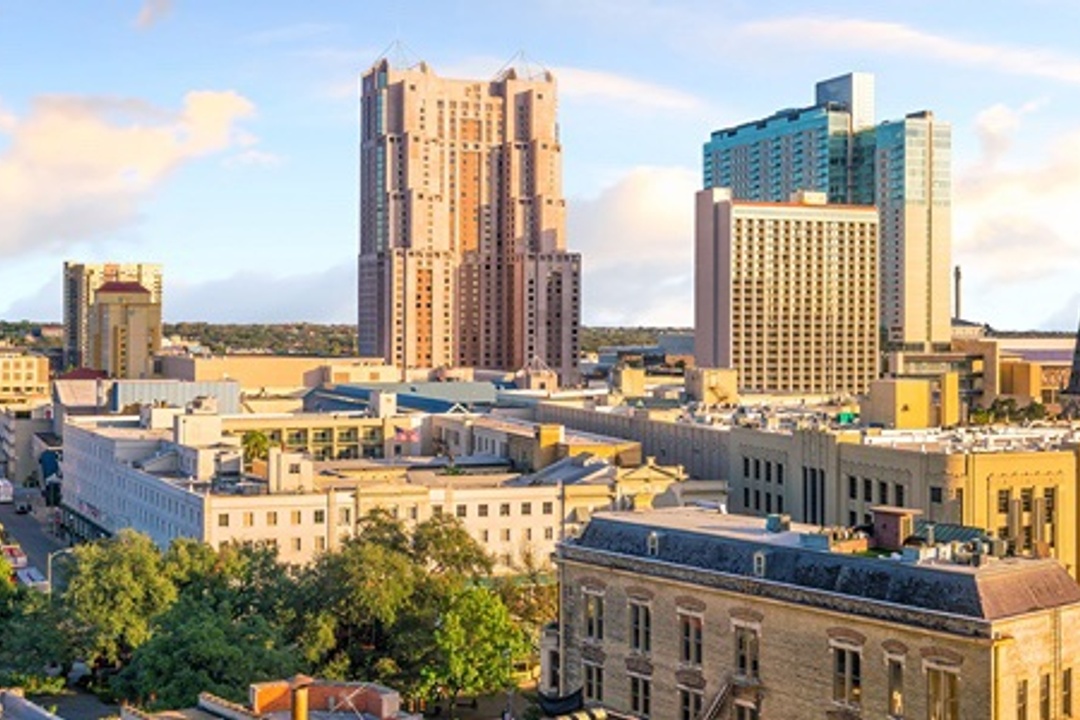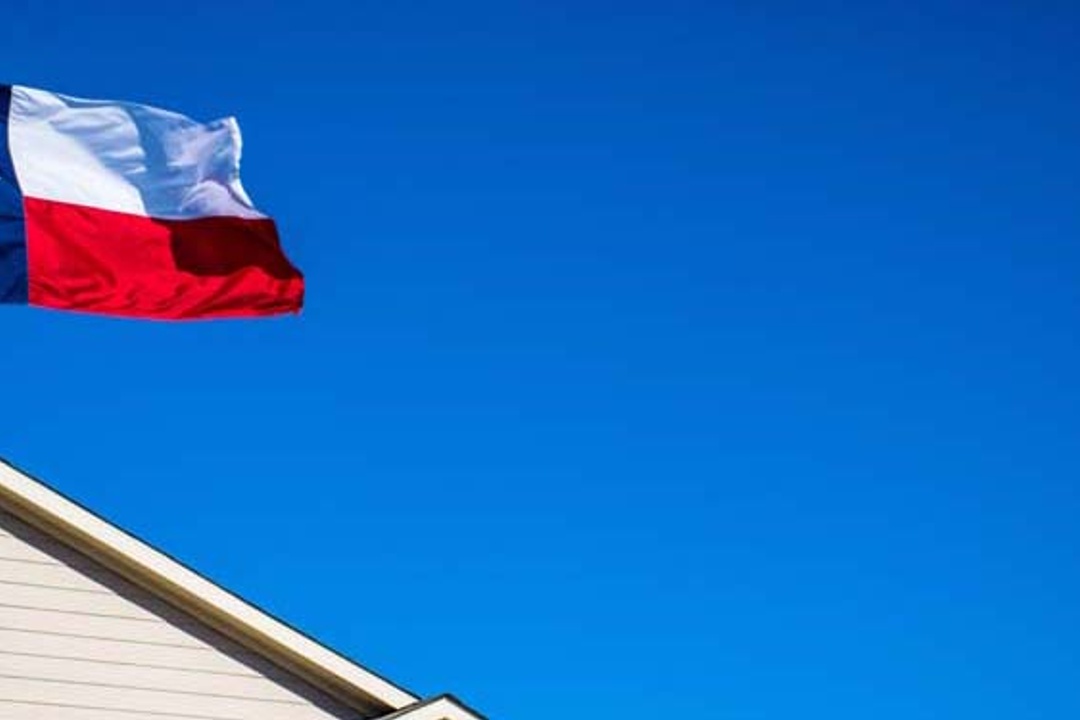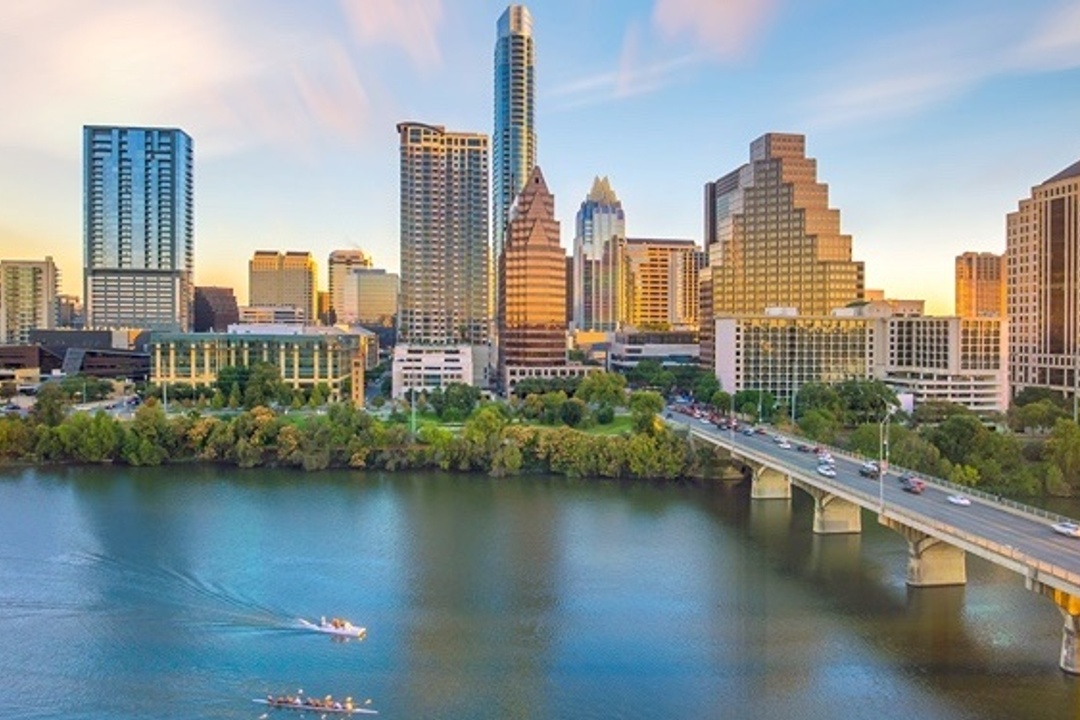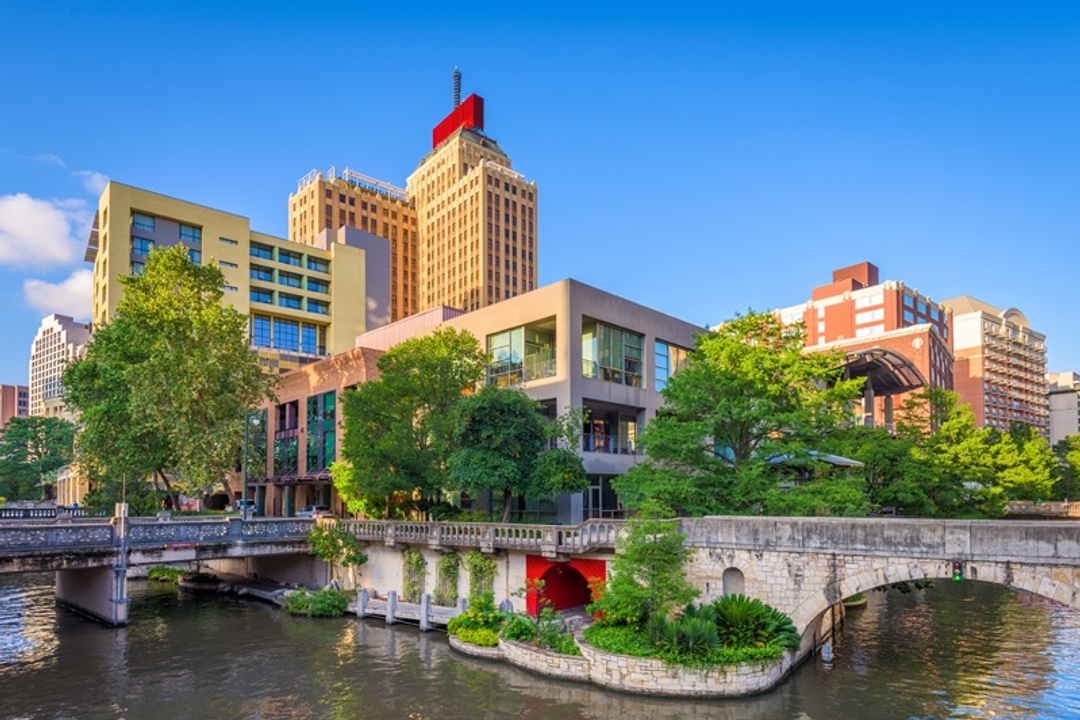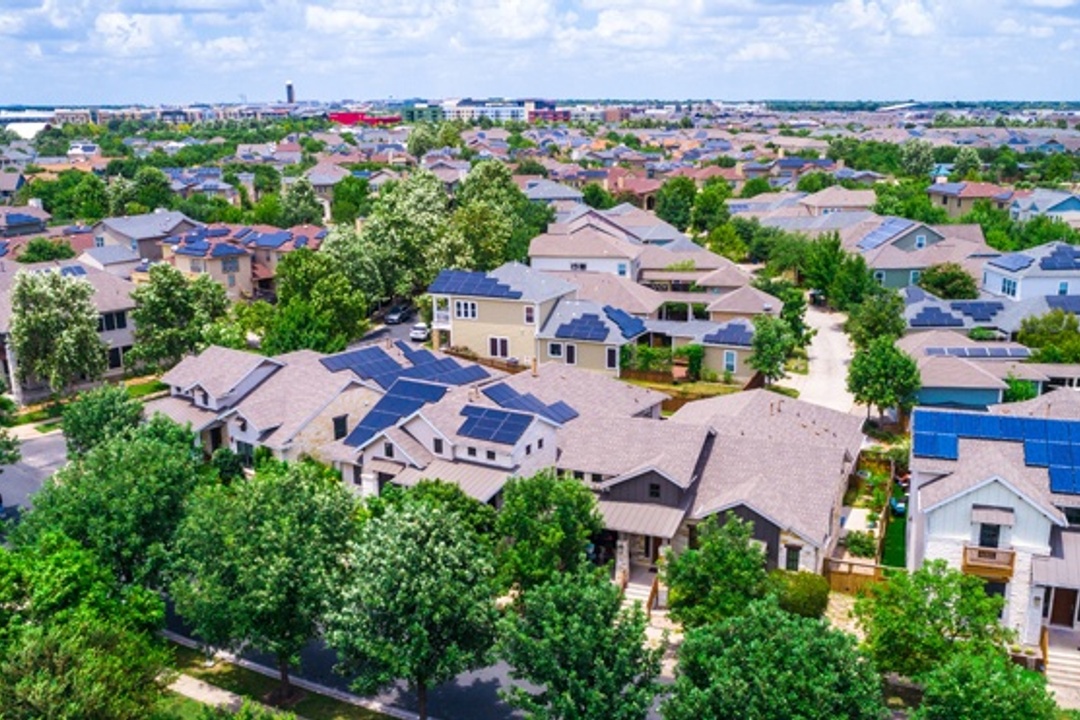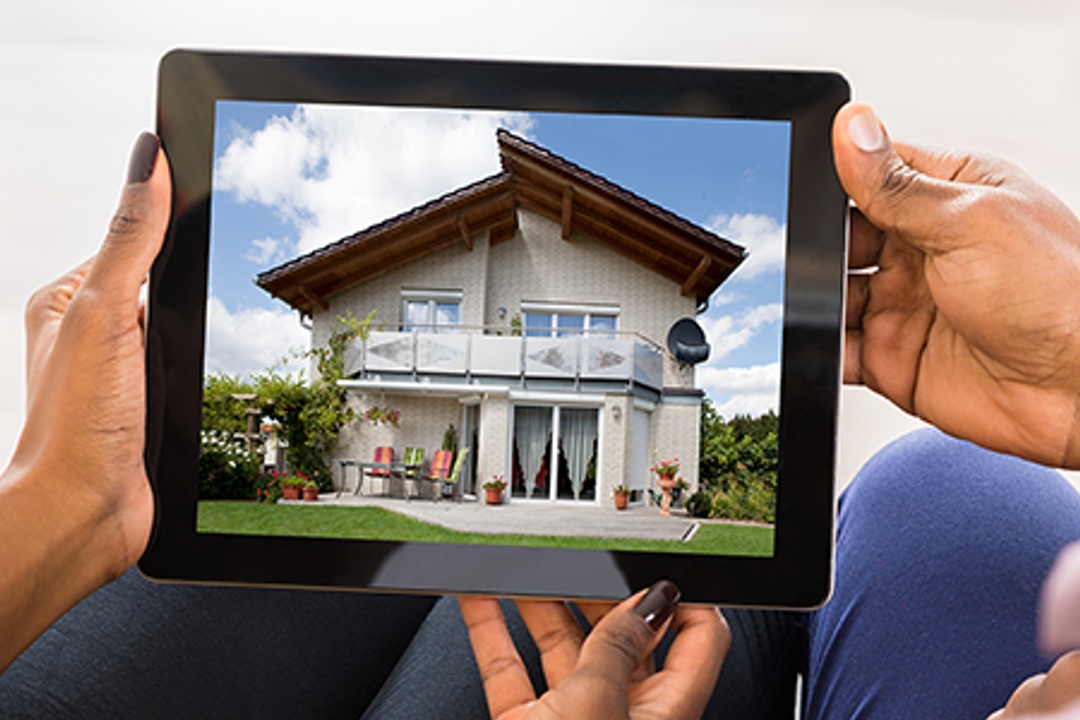
Austin, Texas has long been endeared for its quirky art community and rebellious streak. While that still holds true, it has also become known as a vibrant hub of art, technology, and innovation and has been ranked No. 13 out of the 150 largest metropolitan areas in the 2022-23 "Best Places to Live in the United States" list as well as the Second Fastest Growing City in the country.
People are flocking to Austin from places like California and Oregon to take advantage of its amazing cultural offerings and the fantastic job market.
If you plan on joining the ranks of the estimated 35 people who move to Austin every day, there are a few things you should know before donning your “Keep Austin Weird” t-shirt and settling in.
Pros and Cons of Living in Austin
Keep reading to discover the real perks and downsides of living in Austin. Hopefully, the list below addresses some of your questions and helps you make your decision about moving to our wonderful city.
1. Pro: It Has the Hottest Job Market In the Country
Austin topped the Wall Street Journal's study, enjoying its third consecutive year as number one. With a high average annual salary, low unemployment rates, and an increasing number of jobs, Austin is a prime location for those seeking to start or build their career.
The presence of tech and media giants like Apple, Google, Amazon, and Facebook, along with a wide array of plucky startups mean that Austin has a particularly strong technology sector with lots of exciting opportunities. As the capital of Texas, Austin also has an abundance of government jobs. Healthcare, finance, and educational services also enjoy a strong market here.
2. Pro: Live Music Is Everywhere
Austin is known as the Live Music Capital of the World and, with live music performances topping 100 in a single night, it certainly lives up to its famous title. Across the city, in bars, parks, and even grocery stores, musicians can be found sharing their talent with the world.
Austin City Limits, the longest-running music program in television history, is filmed at the Moody Theater on South Congress. Enter the drawing to attend a show taping or take in one of the 100 live shows offered throughout the year at this iconic theater.
Visit Stubbs BBQ for incredible live music performances and mouth-watering Texas barbecue. Enjoy the concert atmosphere of the large outdoor amphitheater or opt for a more intimate experience with an indoor show. Their gospel brunches every Sunday combine divine music and heavenly barbecue for a truly spiritual experience.
Blues enthusiasts will want to check out Antone’s on 5th street, the self-styled “World-Famous Home of the Blues”. This intimate 450-person venue was originally located on the iconic 6th street and has been playing host to world-class blues artists since 1975.
There are live music venues to serve every taste scattered across the city. Ask a local for the rundown on their favorite spots or do a little exploring of your own to find the one that’s just what you’re looking for.

3. Pro: It’s Home to World-Class Music Festivals
Music lovers can also enjoy the more than 20 music festivals held in the Austin area throughout the year, most notably the world-famous South by Southwest (SXSW) Music Festival held every March. Featuring 2,000 artists from more than 60 countries, SXSW virtually takes over downtown Austin for nine days, with performances taking place in a variety of venues, from bars to parks, to churches throughout the area. A true tribute to the arts, SXSW also features art exhibits, a film festival, and a comedy festival.
Austin City Limits Music Festival is held in Zilker Park over 2 weekends in October. Festival-goers can watch over 130 bands and performers on 8 different stages, get a gourmet bite at the ACLEats Food Court and take in the mini-fest just for kids.
Old Settler’s Music Festival, named after the Round Rock park where it was initially held, is an acoustic music festival now held in nearby Tilmon, Texas. Festival-goers camp out on the 145-acre festival grounds and enjoy a variety of music from 30 different bands, blending local favorites and nationally renowned acts.
4. Pro: Performance and Visual Art Are Everywhere
Music may be everywhere in Austin, but it is not the only art to be found. Austin is designated as a City of Media Arts by UNESCO, in recognition of its international reputation as a hub of music, film, digital art, and technology. This allows local artists to exhibit their work and take part in exchange programs with sister creative cities.
Art of all kinds, from visual to performance, is cultivated and nurtured by the city’s Cultural Arts Division to ensure that Austin’s vibrant artist community continues to thrive. In 1985 they launched the Art in Public Places Program, which acquires works of art for public display in parks and city buildings. Take the Art in Public Places Walking Tour to see all the latest installations.
Download the Wander App to take a literary guided adventure downtown, written by local authors. When you’re done be sure to visit The People’s Gallery, an exhibit of local artists’ work at City Hall. Take part in one of the film festivals hosted by the Austin Film Society or join in the fun at Shakespeare Under the Stars in Zilker Park, presented by Austin Shakespeare. No matter what form of art you enjoy, Austin probably has it.

5. Pro: There Are 220 City Parks and Countless Green Spaces
Austinites love to stay active and enjoy the great outdoors in any one of the numerous city parks in the Austin area. Zilker Park is the quintessential park experience in Austin. On any given day you’ll mingle with locals and tourists alike as they enjoy picnics, off-leash dog walking, or take in any one of the numerous events held here throughout the year.
The 7.25-mile Barton Creek Greenbelt that stretches from Zilker Park to Westlake is packed with activities and popular with runners, cyclers, hikers, and those just out for an afternoon of fun. You can also take a picnic lunch to Auditorium Shores, with its grassy knoll and access to Lady Bird Lake Hike and Bike Trail.
In addition, Walnut Creek Metropolitan Park is an off-leash park and boasts more than 12 miles of tree-shaded trails perfect for hiking and mountain biking. For nature lovers, the Lady Bird Johnson Wildflower Center is the perfect playground, with 282 acres of native plants and trees. No matter what area of Austin you settle in, you are sure to find a stellar park nearby.
6. Pro: It's a Haven for Foodies
Austin is increasingly gaining notoriety as a food scene as well. Whether you’re looking for spicy TexMex, smoky delicious Texas barbecue, delectable vegan treats, or late-night food truck fare, Austin has you covered.
Move over avocado toast, breakfast tacos are the name of the brunch game here and they are sold all over town. Grab Rachel Ray’s favorite migas breakfast tacos from one of the bright blue Veracruz taco trucks or pop into Mi Madre’s for their famous pork carnitas version of this south Texas classic.
Like everywhere else in Texas, barbecue is close to a religion in Austin. If you plan on visiting Franklin Barbecue for their famous smoked brisket, be prepared for long lines and extended wait times. Local Austin landmark The County Line offers 2 great locations close to downtown and an array of family-style dining options perfect for lazy afternoon gatherings.
There are plenty of options to try something new as well. The quirky Hula Hut serves up Tex Mex with a Hawaiian twist if you’re feeling tropical. There is plenty of outdoor seating, beautiful views of Lake Austin, and even a spot to dock your boat.
If you have a sweet tooth, Cold Cookie Company serves up home-style ice cream churned fresh at their location, as well as their signature “unshake” featuring cold delicious layers of ice cream and toppings. Or you can pop in at Capital City Bakery for a delectable selection of vegan cupcakes, brownies, and pastries made from locally sourced ingredients.
There is also an army of more than 1,000 food trucks that call Austin home, with a number of official and unofficial food truck courts located around the city. From the enormous donuts of Gordoughs to the new spin on southern food at Biscuits and Groovy or the authentic Thai food on offer at Dee Dee, the food trucks of Austin cater to every craving imaginable.

7. Pro: Water Fun Is the Favorite In the Summer
One of the best ways to beat the notorious Texas heat is by getting wet and Austin offers some of the best options for water recreation and sports in all of Texas. Whether you are into kayaking, jet skiing, or just a leisurely float, you are sure to find a stellar selection of watering holes within a short drive. Austin is home to 3 man-made lakes - Lake Austin, Lake Travis, and Lady Bird Lake. All 3 lakes are easily accessed and offer a wide range of activities, highly acclaimed swimming holes, and equipment rentals for a variety of water sports.
Barton Springs Pool, located in Zilker Park, is another local favorite. This chilly spring-fed pool maintains an average water temperature between 68 and 70 degrees, making it a refreshing dip no matter how hot the afternoon.
There are also a number of lakes, rivers, and water recreational areas just a short drive from Austin. Float the Guadalupe River, enjoy a boating adventure on Lake Marble Falls or Canyon Lake, lounge on the pebble beaches of Lake Pflugerville or spend an exciting afternoon at world-renowned Schlitterbahn Waterpark, all within a 2-hour drive of downtown Austin.
8. Pro: Two Legs or Four, Everyone Is Welcome
With their love of green spaces and casual living, it’s no wonder that Austin consistently ranks among the most pet-friendly cities in the country. There are a host of local restaurants where you are welcome to bring your dog to enjoy a patio lunch and the list of dog-friendly hotels makes traveling with your pet a breeze.
There are also 17 dog parks and 12 designated off-leash areas in parks around town with plenty of space for your dog to run and swim and play. Whether you take your pooch to cool off in the water at Barkin Springs or enjoy a game of fetch at Zilker Metropolitan Park, you and your dog will feel right at home in Austin.

9. Pro: The Surrounding Hill Country Is Breathtaking
Austin is surrounded by some of the most beautiful scenery in Texas. This region, known as the Hill Country, is marked by beautiful verdant rolling hills and dramatic rocky outcroppings, abundant wildlife, and riotous explosions of wildflowers in the spring.
Austinites have their pick of exceptional day trips from Austin to explore the beautiful countryside beyond. Visit one of the 18 state parks located near Austin, like McKinney Falls, where you can discover the waterfalls along Onion Creek and explore the ruins of an early Texas homestead.
If antiquing and country charm are more your speed, go south to charming Gruene, where you can peruse antique shops and dance the night away at historic 19th-century Gruene Hall. Or head north and visit picturesque Marble Falls. Be sure to stop in at the Blue Bonnet Cafe for a slice of their famous pie and pick some berries to take home at Sweet Berry Farms.
10. Pro: UT Sports Are a Way of Life
Austin is the proud home of the University of Texas at Austin, a public research university with more than 500,000 students and faculty. The campus also houses a number of museums and libraries, including the LBJ Presidential Library and the Blanton Museum of Art. With many alumni choosing to remain after they graduate, Austinites are known to bleed burnt orange and are fiercely loyal to their UT Longhorn sports teams.
UT Football is particularly popular in this Texas town and, from August to December, each game is a big event. The nine-time national champions are known as a formidable team and games are fast-paced and exciting. From game day tailgating and watch parties to the more than 100,000 fans who attend each game at Darrell K Royal-Texas Memorial Stadium, Austinites come out for UT football.
When they’re not watching football, UT fans are more than happy to raise their hook ‘em horns in support of their other athletic teams, most notably basketball and baseball.

11. Pro: Incredible Neighborhoods to Live In
Austin is made up of numerous neighborhoods. Some are more interesting than others, but all provide something special to the individuals who live there. If you're thinking about relocating here, get out and explore the neighborhoods.
Downtown is regarded as one of Austin's greatest neighborhoods for people seeking a vibrant urban lifestyle. This area, located near the state capital, is ideal for folks who prefer to be able to walk to their favorite venues and activities. It's also accessible to several of Austin's main employers as well as popular local attractions.
Clarksville, located west of Downtown Austin, is another fantastic Austin neighborhood. This historic section is one of Austin's most affordable neighborhoods, with plenty of local amenities and a low-key pedestrian feel. Charmingly modest houses and leafy streets may be seen throughout the area.
West Lake Hills, another Austin area, has beautiful lake vistas and lovely hilltop clubs. Set just west of town, this area offers peace and quiet while remaining accessible to Austin's entertainment scene. If you prefer a more suburban setting, consider Northwest Hills. It's distant from the majority of the city's noise, yet there are still plenty of activities for residents to participate in. Many people who move here discover that it is an excellent area to raise a family.
12. Pro: No State Income Tax
The state of Texas is prohibited by the constitution from collecting income taxes. So, while you'll still be paying federal taxes, the state will not pursue you for taxes on earnings from labor.
But don't think you'll get away with not paying state taxes. You will be charged 8.25% Sales and Use Tax (SUT). This is made up of 6.25% SUT, 1% SUT from the city, and 1% SUT from the metro transit authority.
While Texas is known for having lower taxes, there are 20 states that have lower overall tax loads than Texas. So, in this case, the glass is half full: taxes are far lower than in New York and Hawaii, but much more than in Alaska and Florida.

13. Pro: Proximity to Dallas, San Antonio, and Houston
There are cities in the United States that feel cut off from the rest of the country. Minneapolis is one example. However, Austin is only a three-hour drive away from three big cities: Dallas, San Antonio, and Houston.
As a result, Austin serves as a convenient home base for trips to other cities (Houston for Baseball games and Dallas for Football, for example). It is, however, one of the reasons Austin is a fantastic place to do business. If you make Austin your home base for quick expansion, you can capture four cities in one.
14. Pro: Property Investment Opportunities
Austin is well-recognized as a city on the rise. Its population has been growing for years, economic growth is accelerating, and the city continues to be a hotspot for entrepreneurs. The majority of investors are bullish on the city's medium to long-term prospects.
Nonetheless, housing prices remain lower than in the other major cities. In comparison to many other cities across the country, the outer suburbs remain somewhat affordable. As the 11th most populous city in the United States with a diverse economy, property values in the city can only rise more.

15. Pro: Affordable Gas Prices
The Southern states consistently have the lowest gas prices in the country. According to AAA, Texas, along with Mississippi, Louisiana, Missouri, and Alabama have historically had the lowest gas costs. In fact, Texas has the lowest average gas price in the US, at $3.21.
And this is great news because Austin is a large driving city. While you can always take a bus, light rail is mostly restricted to core locations and isn't available in many parts of the city
The low gas costs are due, once again, to Texas' antipathy against taxation. Texas's gas tax is only 20 cents per gallon, which is less than half of California's 53.3 cents per gallon.
16. Pro: Significantly More Affordable Than Many Other Major Cities
If you look at Numbeo's city affordability index, you'll notice that Austin is much more affordable than cities on the West and East Coasts. When you compare Austin to Los Angeles, Seattle, New York, or San Diego, you'll notice a significant difference in the cost of living. You'd want to live in Austin.
Many people are leaving California for Las Vegas, Nevada, where the cost of living is lower. Even so, Austin has it beat by a mile! Despite their proximity, Austin is also less expensive than Dallas. However, if you look south to San Antonio and east to Houston, you'll see a more direct comparison: Austin is roughly as affordable as both San Antonio and Houston.

17. Con: Population Growth Is Leaving a Mark
Austin is currently the 11th largest city in the nation, and that number is only going to rise as the population boom continues.
It was named the second fastest-growing city in the country in 2022 and consistently ranks as one of the best large cities to start a business, so it’s no wonder that people are flocking to live in Austin. In 2021, about 116 net new residents moved to the Austin metro a day, according to data recently released by the U.S. Census Bureau.
This rapid growth inevitably leaves its mark on the capital city, with rising real estate prices and a subtle shift away from the quirkiness that Austin is known for. While residents can still proudly proclaim to “Keep Austin Weird,” the slogan has lost some of its grit. Austin still has a great deal to offer and it is still steeped in a potent cocktail of art and history, but those coming for a second visit may find the city changed from what it used to be.
18. Con: Complaints About Newcomers
The influx of newcomers to the state is possibly every Texan's favorite topic of complaint. There is a widespread belief in Texas that coastal areas such as California, Washington, and New York are becoming less desirable places to live. The story is that taxes are too high, bureaucracy is bad for business, and infrastructure has been mismanaged.
So the argument is that many people are abandoning these states for the liberty of Texas. And data appears to corroborate the claim that more Californians move to Texas than the other way around (by a big margin).
Many Texans believe that the flood of individuals from the coasts dilutes Austin's uniqueness and threatens the way of life that many Texans love. It could be one of the reasons Texas has gotten less conservative in recent years.
19. Con: Austin Traffic Can Get Pretty Bad
If you're moving from Washington, D.C., Los Angeles, or New York, Austin traffic will likely look like a breeze. However, it is still a problem. According to a recent Texas A&M study, the city has the tenth worst traffic in the US. In fact, another report by the Texas Department of Transportation reveals that the stretch of I-35 through downtown Austin is the second most crowded freeway for normal drivers and the most congested for truck drivers.
TomTom is a bit kinder when it comes to ranking Austin’s traffic woes. The GPS company ranked Austin as the 21st most congested city in the country overall, according to the annually reported TomTom Traffic Index. When it comes to evening peak hours, Austin is the 15th worst in the country, with travel taking 57 percent longer than it does in free-flowing traffic. Peak morning traffic is even worse, coming in at 14th overall.
One reason for this is that Austin lacks a true bypass that routes drivers around the city who are traveling through on I-35. The other major interstate, the MoPac Expressway, also runs north and south. A new HOV toll lane on the MoPac has done little to improve commute times. With more than 100 people moving to Austin every day, the traffic situation keeps getting worse and worse.
20. Con: Austin Is Becoming More Gentrified
The rising cost of living is causing gentrification in several Austin districts, including Holly and Montopolis. In fact, Austin is becoming one of the least affordable cities in the US. The grunge and underground culture that once made Austin a 'cool' place to be is slowly being pushed away by the influx of folks from the coasts.
The University of Texas commissioned a paper on this gentrification issue, emphasizing its potential to displace low-income, African-American, and Hispanic residents from their own communities. It says, in part:
"...neighborhoods that have historically housed African-American and Hispanic populations may lose their cultural identity and become enclaves for primarily white and affluent residents..."
Ironically, the gentrification process could diminish Austin's general appeal, which was what drew most individuals to the area in the first place!

21. Con: It's Not the Best for Pro Sports
Austin has only one major league sports team, and the team is relatively new. It’s Austin FC (Football Club), who made it to Major League Soccer in 2021 for the first time.
Their professional baseball, basketball, and football teams don’t make the cut, unfortunately. So, you’ll have to head north to Dallas to enjoy a Cowboys (Football) or Mavericks (Basketball) game. Dallas also hosts the Dallas Stars, Texas’s major league NHL team. Pro sports fans might want to make the trip east to Houston Texans (NFL) or Astros (Baseball).
22. Con: High Property Taxes
While Texas does not have statewide property taxes, Travis, Hays, and Williamson counties (in which Austin is located) do. When you sell your home in Austin, you can anticipate paying between 2.2% and 2.5% in property taxes.
Overall, these property tax rates are much higher than the national average of 1.07% and California's average of 0.76%. So, while Austinites save on state income tax, they are taxed elsewhere to keep the city lights on.
23. Con: Austinites Must Embrace the Heat
Nestled deep in the heart of Texas, expect summers in Austin to be hot and humid. Summertime highs typically hover in the 90s, occasionally reaching over 100. The hottest months of the year are July and August.
Austinites know how to combat the heat, exercising in the mornings or evenings and taking full advantage of all the natural pools and water recreation areas located in and around the city. Air conditioning is the norm here, whether in homes, businesses, or cars, so expect higher electric bills in summer.
The heat can be difficult for some people to take, but it does have its advantages too. Austin has more than 225 days of sunshine each year, making it a paradise for outdoor enthusiasts. It also enjoys mild snowless winters and exuberant springs with an explosion of wildflowers.
What Can You Expect: Housing Stats
With exponential recent population growth that is showing no signs of slowing, Austin’s real estate market is highly competitive. The inventory of available homes is low, and demand continues, causing prices to rise, but Austin’s average home price is still 23% higher than the national average.
Real Estate Housing Market as of September 2022
*Median sales price: $555,000
*Average Days on Market: 35
*Average Apartment Rent: $1,893
What Can You Expect: Neighborhoods
Austin neighborhoods are varied and unique, with different areas catering to different lifestyles and price points. When choosing your neighborhood, be sure to take the commute into account, as traffic in Austin can be difficult.
Here is a rundown of some of our favorite Austin neighborhoods.
South Austin:
South Austin, generally considered the area from Town Lake to Slaughter Lane, is the epicenter of the “Keep Austin Weird” movement. This area of town was once the place to be for musicians and free spirits but has grown to become one of Austin’s prized jewels.
With Zilker Park, Barton Springs, various Greenbelt entry points, endless shopping, and restaurants all nearby; it’s hard to find a more “Austin” neighborhood with all the perks.
The Zilker neighborhood is agreeably one of the most coveted in the city, with classic craftsman homes and brand new, contemporary style houses lining the hilly streets. Additionally, Travis Heights is a quiet oasis walking distance to the hustle and bustle of downtown and Congress Avenue. We also love Southampton Hills for its more reasonable prices while still being close to restaurants and entertainment.
Circle C Ranch:
Drive South on Mopac until it hits 45 and then keep going. Eventually, you will happen upon Circle C Ranch, a large master-planned community in Southwest Austin. With over 54,000 homes, a golf course, tennis courts, three swim centers, 500 acres of parkland, top-rated schools, and a median home price of $814K; Circle C Ranch has been attracting families since its start in the ’80s. The community was annexed from Austin in 1997 but has still continued to grow and flourish.
Westlake:
Nestled just six miles from downtown sits West Lake Hills, also known as Westlake. It’s considered one of the most (if not the most) exclusive areas in Austin. Houses sit nestled in the hills, along winding roads, with views of downtown and Lake Austin peeking through the branches of large live oaks.
But perhaps the main attraction to Westlake is the area’s elite school district, rated as one of the top districts in Texas. But exclusive schools and beautiful scenery don’t come cheap. The majority of homes in Westlake are listed at $1 million plus and many are selling for much higher. Furthermore, Westlake’s proximity to Austin proper makes accessing dining and entertainment seamless. But the area does have its own offerings. Popular restaurants include Jack Allen’s Kitchen, County Line BBQ, Las Palomas, Texas Honey Ham, and The Grove.
Georgetown:
Located about 30 miles from Austin, Georgetown is a great location to raise a family without the exorbitant price tag of other areas closer to the city. The heart of Georgetown is its historic downtown square, made up of some of the country’s best-preserved Victorian and pre-WWI buildings.
The city has been named one of the best places to purchase a historical house and was designated a national “Main Street City” in 1997 due to its preservation efforts. Known as the “Red Poppy Capital of Texas,” Georgetown is recognized for its poppies that are planted throughout the city. This is why the city’s Red Poppy Festival happens each year in April. Locals and visitors alike can enjoy the town’s many parks and outdoor areas including San Gabriel Park, Blue Hole, Inner Space Cavern, and a variety of hike and bike trails.
Cedar Park:
Situated just 17 miles from downtown Austin is one of the city’s largest suburbs, Cedar Park. Served by the highly-rated Leander School District, Cedar Park calls itself “the best place to raise a family,” and for good reason.
The town is home to 47 city parks, 22 miles of trails, golf courses, wineries, breweries, and more! The H-E-B Center at Cedar Park is a sports and entertainment arena that hosts the Texas Stars Hockey team, the Austin Spurs Basketball team, and popular musical performers.
As one of the safest cities in Texas, Cedar Park is rapidly growing. And with a median home price of about $525,000, it doesn’t get much better than that!
Round Rock:
Recognized as one of the most livable towns, Round Rock is a fast-growing suburb just north of Austin, known for its outdoor activities and historic sites. The city has become a major center for economic growth and is home to companies in industries like Clean Energy, Advanced Manufacturing, Life Sciences, and Computer and Software Development. Downtown Round Rock is full of family and date night fun.
From grabbing a drink at a local watering hole, to biking along one of the city’s many trails, to visiting the library with the kids; you are sure to find just what you’re looking for. Round Rock’s median listing price is nearly $460,000 and rising, so act now before prices soar.
What Can You Expect: Transportation
Though there have been recent efforts and initiatives to make Austin a more walkable city, it remains car-dependent mainly. 73% of the more than 2 million Austinites drive to work alone, with a further 9.6% opting to carpool with friends or colleagues. There are also about 20,000 people who live in smaller communities around Austin and commute to work every day.
All of those cars on the road mean that traffic at peak times can be a waiting game. Austinites can expect to spend an average of 180 minutes stuck in traffic every day. While larger cities like Los Angeles still boast higher traffic wait times, the congestion in Austin can be daunting if you aren’t expecting it.
If you would like to live car-free, there are options, but navigating the city will take planning and extra time. The city itself is spread out over 271 square miles, with suburbs and bedroom communities clustered around it, making biking or walking to some of the more distant amenities impossible.
Austin Capital Metro provides public transportation for the city. Services include a system of scheduled buses, a 32-mile rail line, and even a vanpool rideshare aimed at taking some of the cars off the road. Austin also boasts a bike share program, Austin BCycle, that provides rentable bikes at 75 different docking stations throughout the city.
What Can You Expect: Schools
Austin is home to 94 public schools and 113 private schools. In this educated city, with 40.6% of the population having a Bachelor's degree or higher, academic excellence is prized. As a result, 17 of the local high schools are nationally recognized. Austin is also home to 6 colleges and universities, including the University of Texas.
Conclusion
Austin is a growing city with plenty of opportunities. The city's burgeoning IT industry, inexpensive cost of living, and vibrant music scene make it ideal for many young individuals and families looking for a way to go ahead.
While there are some drawbacks, such as traffic and extreme summer heat, many individuals have relocated to Austin in recent years because of the outstanding benefits of this lovely American city.
No matter what brings you to Austin, we’d be honored to help you find the perfect home base from which to explore our beloved city. Contact one of our great Austin area REALTORS® for a complimentary Relocation Guide, offering even more tips and information about living in Austin. If you are a Veteran, be sure to also check out our Ultimate Guide To Texas Veterans Benefits and Military Rewards.

